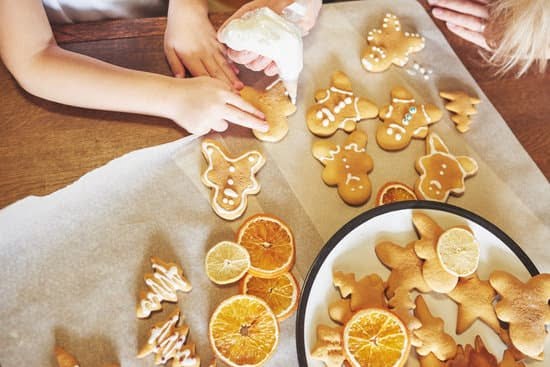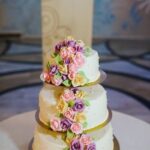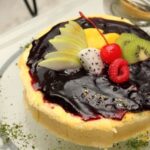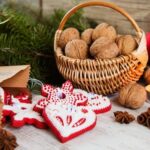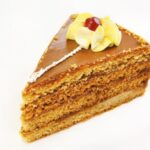When it comes to creating a perfect wedding experience, one element that holds immense significance is the wedding cake. Not only does it serve as a delicious treat for the guests, but it also acts as a centerpiece of the reception, symbolizing the couple’s love and commitment. However, what truly sets an extraordinary wedding cake apart is its decoration.
The right decorations can reflect the couple’s unique personality and style, making their special day even more memorable. This article aims to guide aspiring bakers and decorators on how to decorate wedding cakes to perfection.
The decorations on a wedding cake play a crucial role in capturing the essence of the couple’s love story. Whether it’s delicate sugar flowers representing romance or intricate piping depicting elegance, every detail on the cake adds to its overall charm. Learning how to decorate wedding cakes is not just about acquiring a new skill; it is about telling a beautiful story through edible art.
Additionally, by learning this craft, individuals can create personalized touches that make their wedding cakes stand out from the rest. From selecting trendy color palettes to incorporating unique design motifs, decorating skills enable bakers and decorators to bring their creativity and imagination into reality.
In this comprehensive guide, we will explore everything from essential tools and equipment needed for cake decoration to understanding different techniques like piping and fondant application. We will provide step-by-step instructions on assembling and layering cake tiers, as well as expert tips on achieving perfectly leveled cakes for effective decoration. Join us on this journey of transforming ordinary cakes into extraordinary masterpieces that will leave both couples and guests in awe.
Essential Tools and Equipment for Decorating Wedding Cakes
When it comes to decorating wedding cakes, having the right tools and equipment is essential. These tools not only make the decoration process easier but also enable you to achieve professional-looking results. Here are some essential tools and equipment that every aspiring cake decorator should have:
- Piping Bags and Tips: Piping bags are used to pipe buttercream or royal icing onto the cake in various designs and patterns. They come in different sizes and can be disposable or reusable. Piping tips determine the shape and size of the icing pattern, such as roses, stars, or shells.
- Fondant Tools: Fondant is a popular choice for cake decorations due to its smooth finish and versatility. Essential fondant tools include a rolling pin for rolling out the fondant, a fondant smoother for smoothing it onto the cake, and cutters for creating shapes or patterns.
- Spatulas: Spatulas are necessary for spreading frosting or ganache onto the cake’s surface. Offset spatulas are particularly useful for achieving smooth edges and even layers.
- Cake Turntable: A cake turntable makes decorating much easier by allowing you to rotate the cake while working on it. This ensures even coverage of frosting or icing on all sides.
- Edible Glitters or Lustre Dust: These add shimmer and sparkle to your decorations, making them eye-catching and glamorous.
- Molds and Stencils: Molds can be used to create intricate 3D decorations like flowers or leaves in gum paste or chocolate. Stencils are great for adding texture or patterns with powdered sugar or edible spray paint.
It is important to invest in high-quality tools that will last you many wedding cakes to come. Many specialty baking stores carry these items, but they can also be easily found online through various retailers dedicated to cake decorating supplies.
Once you have collected all the necessary tools, take some time familiarizing yourself with each one and practicing different techniques. Remember, practice makes perfect, and developing a comfort level with your tools will improve the overall outcome of your cake decorations.
Understanding Different Wedding Cake Decoration Techniques
When it comes to decorating wedding cakes, there are several popular techniques that can be used to create beautiful and unique designs. Understanding these techniques is essential for any aspiring cake decorator. Here, we will explore some of the most commonly used decoration techniques, providing a step-by-step guide on how to practice and master each one.
One popular technique is piping, which involves using buttercream icing and a piping bag to create intricate designs on the cake’s surface. The technique allows for precision and delicate detailing, making it perfect for creating elegant lace patterns or floral designs. To practice piping, start with simple shapes like dots or lines before progressing to more complex designs.
Another widely used technique is fondant, which involves covering the entire cake with a smooth layer of rolled fondant icing. Fondant provides a clean and polished look to the cake and can be easily molded into various shapes and forms. To work with fondant, you will need some basic tools such as a rolling pin, fondant smoother, and cookie cutters. By following step-by-step instructions and practicing different techniques like draping or ruffling, you can achieve stunning fondant decorations.
Royal icing is yet another versatile decorative technique often used in wedding cake designs. This type of icing hardens into a smooth finish that can be piped onto the cake in elaborate patterns or molds. Royal icing is known for its ability to hold its shape well, making it ideal for creating intricate lacework or 3D decorations like flowers or figures. Practice working with royal icing by mixing it to the right consistency and experimenting with different piping tips.
| Decoration Technique | Description |
|---|---|
| Piping | Buttercream icing + piping bag = intricate designs and delicate detailing |
| Fondant | Smooth layer of rolled icing that can be molded into various shapes and forms |
| Royal Icing | Icing that hardens, allows for elaborate piping and intricate lacework or 3D decorations |
By understanding these different wedding cake decoration techniques, you will have the knowledge and skills necessary to create stunning cakes. Don’t be afraid to practice and experiment with each technique to develop your own unique style. Remember, decorating a wedding cake is not only about making it look beautiful but also about showcasing the couple’s personality and creating a memorable experience for everyone involved.
Choosing the Right Flavor, Shape, and Size for Your Wedding Cake
When it comes to creating the perfect wedding cake, choosing the right flavor, shape, and size is essential. These elements not only contribute to the overall aesthetics of the cake but also determine how well it complements your wedding theme, satisfies your guests’ taste buds, and accommodates your venue. In this section, we will explore some tips on making these crucial decisions.
Selecting a cake flavor that complements your wedding theme is an important step in creating a harmonious experience for your guests. Consider flavors that are classic and timeless, such as vanilla, chocolate, or red velvet. If you have a specific theme or color scheme in mind for your wedding, you can also incorporate those elements into the flavor of the cake.
For example, if you’re having a tropical-themed wedding, consider flavors like coconut or pineapple. Remember to offer a variety of options for your guests with different preferences.
Determining the appropriate size and shape of your wedding cake depends on factors like guest count and venue. It is important to estimate how many slices of cake you will need based on your guest list. Keep in mind that not everyone may want a slice of cake, so plan accordingly.
As for shape, consider the style and ambiance of your venue when making this decision. Round cakes are always a classic choice and tend to be more versatile in terms of design. Square or rectangular cakes can offer a modern touch while sheet cakes are practical for serving larger guest counts.
The chosen flavor, shape, and size of your wedding cake play a significant role in influencing the decoration process. For instance, certain shapes like hexagons or hearts may present unique challenges when it comes to intricate decorations like piping or fondant work.
Similarly, larger cakes may require more elaborate designs or additional layers to create visual balance. It’s important to discuss these considerations with your chosen baker or cake decorator to ensure that the decoration aligns seamlessly with the overall design and size of your cake.
By carefully considering the flavor, shape, and size of your wedding cake, you lay the foundation for a stunningly decorated masterpiece that will be a memorable centerpiece at your reception. Remember to communicate your preferences and needs to your baker or cake decorator to ensure that they can bring your vision to life. In the next section, we will dive into planning and designing the decorations for your wedding cake.
Planning and Designing the Decorations for Your Wedding Cake
Planning and designing the decorations for your wedding cake is a crucial step in creating a visually stunning centerpiece that perfectly complements your overall wedding theme. It is important to give careful thought and consideration to this process, as the decorations will not only reflect your personal style but also set the tone for the entire event. Here are some tips to help you plan and design the perfect decorations for your wedding cake.
- Start by brainstorming ideas: Begin by considering your wedding theme, color scheme, and your own preferences as a couple. Think about elements from your love story or personal interests that could be incorporated into the cake design. Create a mood board or Pinterest board to gather inspiration and visualize different decoration ideas.
- Consult with a professional: If you’re feeling overwhelmed or unsure about where to start, don’t hesitate to consult with a professional baker or cake decorator. They can provide valuable insights and suggestions based on their expertise and experience. Collaborating with a professional can also ensure that your vision is effectively translated into reality.
- Consider different decoration motifs: Flowers, lace, and geometric patterns are popular decoration motifs often used in wedding cakes. Flowers can be fresh or made of icing, fondant, or gum paste. Lace designs can be achieved using edible lace mats or lace molds. Geometric patterns like chevron or herringbone can be created using stencils or piping techniques. Don’t be afraid to mix and match different motifs to create a unique design.
- Sketch out the design: Before you start decorating the actual cake, sketch out your design on paper or use computer software specifically designed for cake decorating. This will give you a clear idea of how the decorations will be placed on each tier of the cake, ensuring symmetry and balance.
Remember that practice makes perfect when it comes to cake decoration, so don’t hesitate to experiment with different techniques and designs. Enjoy the process and let your creativity shine through as you plan and design the decorations for your wedding cake.
Coloring and Adding Texture to Wedding Cake Decorations
Coloring and adding texture to wedding cake decorations is an important step in creating a visually appealing and eye-catching design. The colors and textures of the decorations can enhance the overall aesthetic of the cake, complementing the theme and style of the wedding. This section will provide an overview of various coloring options for edible decorations, techniques for achieving different textures using tools like molds and stencils, and tips for creating visually stunning decorations.
Coloring Options for Edible Decorations
When it comes to coloring edible decorations, there are several options to choose from. One popular option is gel food coloring, which comes in a wide range of vibrant shades. Gel food coloring is concentrated, allowing you to achieve intense hues without impacting the consistency or texture of your icing or fondant.
Another option is powdered food coloring, which comes in both matte and shimmer finishes. Powdered food coloring is great for achieving pastel shades or for dusting onto dry surfaces to add a touch of color.
If you prefer a more natural approach, you can use edible plants and flowers to create organic dyes. For example, steeping hibiscus petals in hot water creates a beautiful pinkish-red dye that can be used to color frostings or fondant.
Adding Texture Using Molds and Stencils
Adding texture to cake decorations can elevate their visual appeal. One way to achieve texture is by using molds. Silicone molds come in various shapes and designs, such as lace patterns or floral motifs. Simply press fondant or gum paste into the mold and carefully remove it to reveal intricately textured decorations.
Stenciling is another technique that can add depth and dimension to wedding cake decorations. Place a stencil over your cake surface or decoration area, then use an airbrush or icing spatula to apply color through the openings of the stencil onto your cake. This technique allows you to create intricate designs or patterns, such as lace detailing or monograms.
Tips for Creating Visually Stunning Decorations
To create visually stunning decorations, it’s important to pay attention to details. For example, consider using multiple shades of a single color to add depth and dimension to your decorations. This can be achieved by mixing different intensities of the same food coloring shade or by painting on multiple layers of color.
Additionally, consider incorporating metallic accents into your decorations. Edible gold or silver leaf can add a touch of elegance and shimmer to your cake. Alternatively, you can use edible metallic paints or dusts to achieve a similar effect.
Remember that practice makes perfect when it comes to coloring and adding texture to wedding cake decorations. Experiment with different techniques and combinations of colors to find what works best for your design. By paying attention to the smallest details, you can create decorations that will leave a lasting impression on your guests and make your wedding cake truly unforgettable.
Assembling and Layering the Wedding Cake
Creating a stunning wedding cake involves not only artistic decorations but also proper assembly and layering techniques. This section will guide you through the process of stacking and assembling cake tiers to ensure a structurally sound base for your decorations.
Before assembling your wedding cake, make sure you have all the necessary tools and equipment. Some essential items include cake boards, dowels or supports, offset spatulas, and a turntable for easy maneuvering.
Here is a step-by-step guide to properly stack and assemble your cake tiers:
- Start by preparing each tier of your cake separately. Level off the tops to ensure even layers.
- Place a sturdy cake board onto your turntable or serving platter, using a small amount of frosting to secure it in place.
- Add a thin layer of frosting or buttercream onto the cake board to create a base for the first tier.
- Carefully lift the first tier onto the prepared board, making sure it is centered properly.
- If you are working with multiple tiers, insert dowels or support systems into the bottom tier before adding the next one. These will provide stability and prevent any sinking or collapsing.
- Repeat these steps for each additional tier until all layers are stacked securely.
- Once assembled, use an offset spatula to add a crumb coat of frosting over the entire stacked cake. This will seal in any loose crumbs and create a smooth surface for your final decorations.
- Place the assembled cake in the refrigerator to chill for at least 30 minutes before applying additional layers of frosting or fondant.
By following these steps, you can ensure that your wedding cake is stable and ready for further decoration. Remember to take your time during this process as it determines the overall appearance and structural integrity of your masterpiece.
Assembling and layering your wedding cake is a critical step in the decoration process. Once you have successfully completed this step, you will be ready to move on to applying the finishing touches and finalizing the decoration of your cake.
Applying the Finishing Touches and Finalizing the Wedding Cake Decoration
After assembling and layering the wedding cake, it’s time to apply the finishing touches and finalize the decoration. This step is essential in creating a visually stunning cake that reflects the couple’s unique style and personality. With careful attention to detail, you can achieve a beautifully decorated wedding cake that will leave a lasting impression on your guests.
To begin, follow these step-by-step instructions for properly placing and attaching the decorations. Start by gently placing any flowers or other decorative elements onto the cake, ensuring they are securely positioned. If using fondant or gum paste decorations, use small amounts of edible glue or water for adhering them to the cake. It’s important to be patient during this process, taking extra care not to damage any delicate decorations.
Achieving symmetry and balance in the overall design is crucial for a visually appealing cake. Step back occasionally to assess how everything looks from different angles. Make adjustments as needed to create a harmonious balance between all elements of the decoration.
Consider adding additional finishing touches like cake toppers or edible embellishments. Toppers can be chosen to match the couple’s interests, hobbies, or even their professions. Edible embellishments such as metallic accents, sugar pearls, or intricate piping designs can elevate the overall aesthetic of the cake.
Remember that practice makes perfect when it comes to decorating wedding cakes. Don’t be afraid to experiment with different techniques and designs beforehand. The more you practice, the more confident you’ll become in your ability to create stunning decorations.
Conclusion
In conclusion, decorating a wedding cake is an essential part of creating a memorable and unforgettable wedding experience. The decorations on a wedding cake not only add beauty and elegance to the dessert but also have the power to reflect the couple’s personality and style.
It is crucial to learn how to decorate wedding cakes properly, as it allows couples to have complete control over their design and ensures that their cake perfectly complements the overall theme and ambiance of their special day.
Throughout this article, we have discussed the different aspects involved in decorating a wedding cake. From understanding essential tools and equipment to learning various techniques like piping, fondant, and royal icing, each step contributes to achieving stunning decorations.
It is important for couples to consider factors such as the flavor, shape, and size of their cake when planning its decoration. By carefully planning and sketching ideas in advance, considering the wedding theme and color scheme, and utilizing popular decoration motifs like flowers or geometric patterns, couples can create a truly unique design that reflects their personal taste.
Ultimately, successfully decorating a wedding cake brings immeasurable joy and satisfaction. It allows couples to showcase their creativity while creating a visually appealing centerpiece that leaves a lasting impression on their guests. As with any skill or art form, practice makes perfect when it comes to cake decoration.
Couples are encouraged to experiment with different techniques, colors, textures, and finishing touches until they achieve their desired result. With dedication and creativity, they can create an unforgettable wedding cake adorned with stunning decorations that perfectly encapsulate their love story on their special day.
Frequently Asked Questions
How do you simply decorate a wedding cake?
Decorating a wedding cake can be done simply by using various techniques and elements to add elegance and beauty. One popular option is to cover the cake with a smooth layer of fondant, which provides a blank canvas for decorations. From there, you can use edible flowers or decorative frosting details such as intricate piping, scrolls, or lace patterns to create a stunning design.
Another simple but elegant approach is to use fresh flowers as a cake topper or scattered around each tier for a natural and romantic touch. Additionally, you can add some finishing touches with edible pearls, ribbons, or even personalized cake toppers that reflect the couple’s story or theme.
What to decorate a wedding cake with?
When it comes to decorating a wedding cake, there is an array of options available depending on the desired style and theme. Some popular choices typically include buttercream frosting, royal icing, fondant, or gum paste flowers. Buttercream frosting offers a smooth and creamy finish that can be piped into various shapes and designs.
Royal icing allows for intricate detailing and delicate piped decorations that dry hard for a polished look. Fondant gives cakes a sleek appearance and provides the opportunity for sculpted designs or flawless finishes with its pliable texture. Gum paste flowers are crafted in advance and provide lifelike floral embellishments that can be painted or dusted for added realism.
How far in advance should you decorate a wedding cake?
The timing for decorating a wedding cake greatly depends on several factors such as the complexity of the design, storage capabilities, as well as personal preference. Generally speaking, it is recommended to decorate the wedding cake one to two days before the event to ensure freshness while allowing enough time for any potential mishaps or adjustments. This timeframe ensures that your decorations will remain intact without sacrificing taste or quality due to extended exposure in room temperature conditions.
However, if your design involves intricate sugar work or delicate edible features that may require additional time for assembly or drying processes, it’s advisable to start decorating earlier. Ultimately, it’s crucial to prioritize maintaining the cake’s appearance and taste with careful planning and coordination.

Welcome to our cake decorating blog! My name is Destiny Flores, and I am the proud owner of a cake decorating business named Cake Karma. Our mission is to provide delicious, beautiful cakes for all occasions. We specialize in creating custom cakes that are tailored specifically to each customer’s individual needs and tastes.

